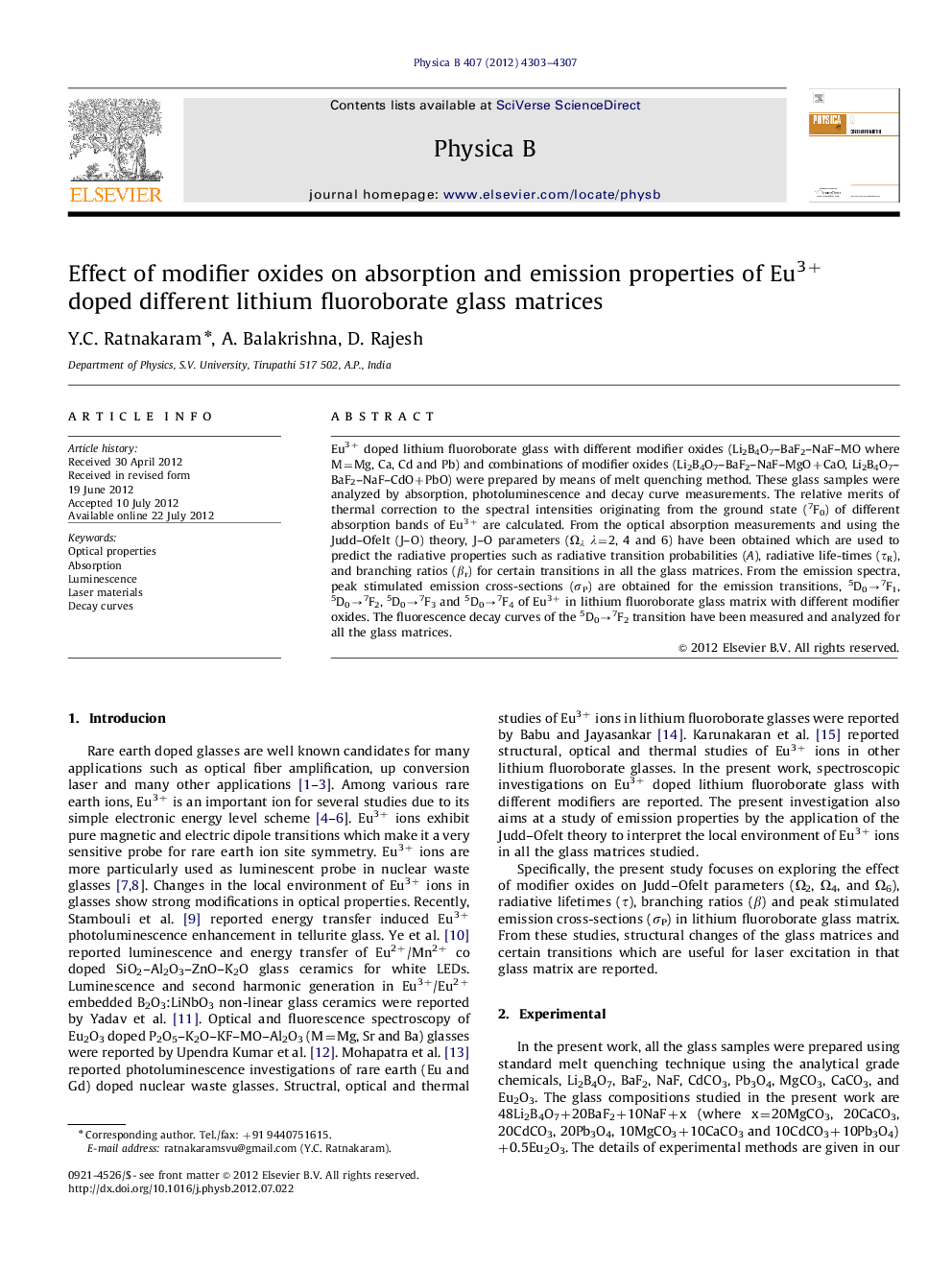| Article ID | Journal | Published Year | Pages | File Type |
|---|---|---|---|---|
| 1810554 | Physica B: Condensed Matter | 2012 | 5 Pages |
Eu3+ doped lithium fluoroborate glass with different modifier oxides (Li2B4O7–BaF2–NaF–MO where M=Mg, Ca, Cd and Pb) and combinations of modifier oxides (Li2B4O7–BaF2–NaF–MgO+CaO, Li2B4O7–BaF2–NaF–CdO+PbO) were prepared by means of melt quenching method. These glass samples were analyzed by absorption, photoluminescence and decay curve measurements. The relative merits of thermal correction to the spectral intensities originating from the ground state (7F0) of different absorption bands of Eu3+ are calculated. From the optical absorption measurements and using the Judd–Ofelt (J–O) theory, J–O parameters (Ωλλ=2, 4 and 6) have been obtained which are used to predict the radiative properties such as radiative transition probabilities (A), radiative life-times (τR), and branching ratios (βr) for certain transitions in all the glass matrices. From the emission spectra, peak stimulated emission cross-sections (σP) are obtained for the emission transitions, 5D0→7F1, 5D0→7F2, 5D0→7F3 and 5D0→7F4 of Eu3+ in lithium fluoroborate glass matrix with different modifier oxides. The fluorescence decay curves of the 5D0→7F2 transition have been measured and analyzed for all the glass matrices.
